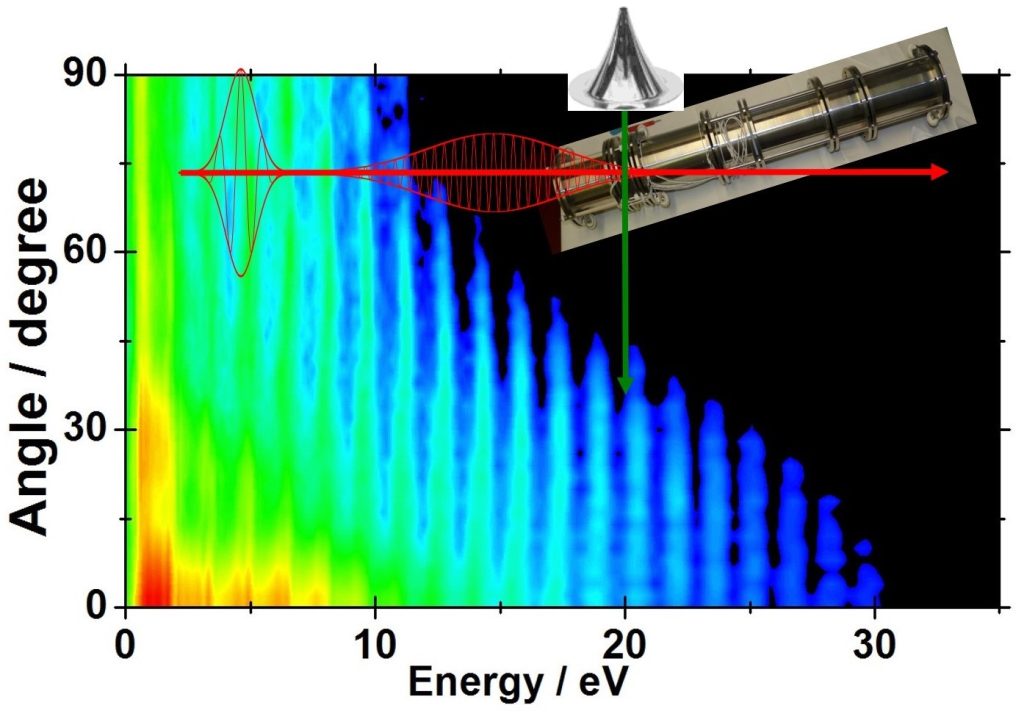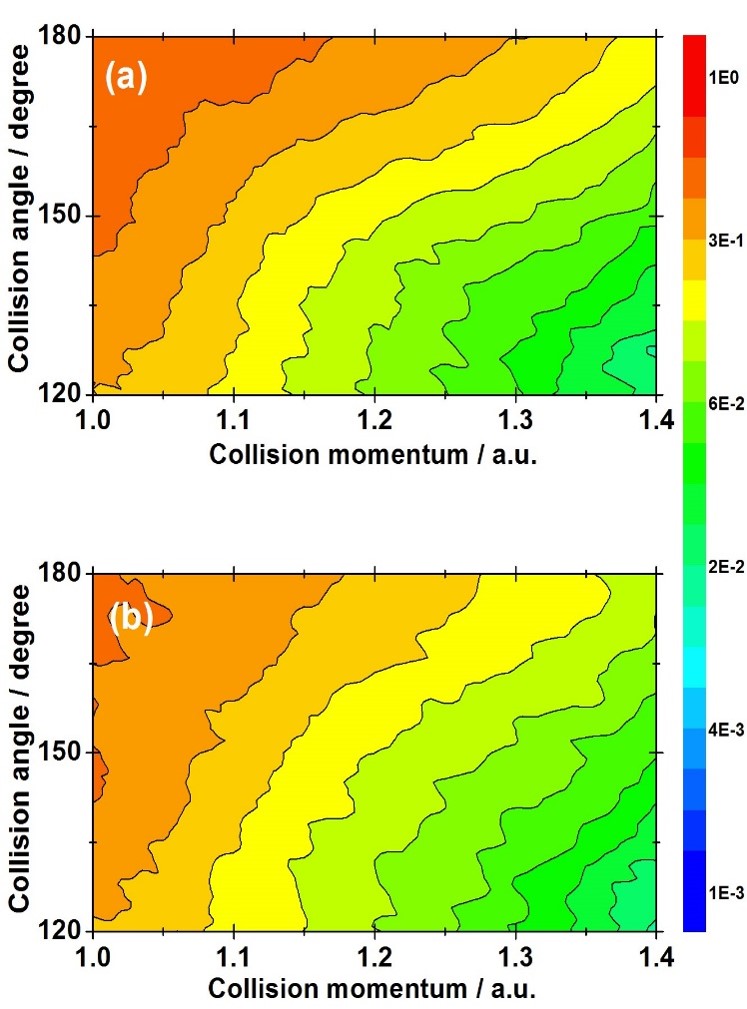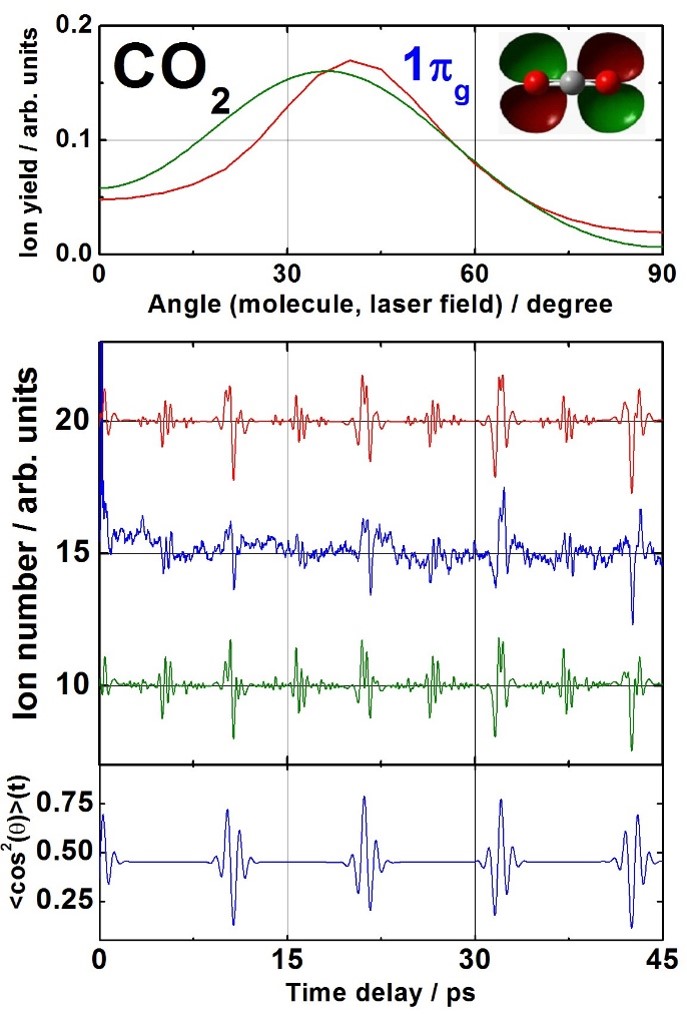Electron-molecule and electron-molecular ion collisions play an important role in the photophysics and photochemistry of planetary atmospheres and plasmas.
Laser-induced electron diffraction relies on the elastic recollision of the oscillating photoelectron in the laser field during tunnel ionization.
The specificity of laser excitation lies in the ability to measure this recollision on spatially aligned and oriented molecules with a first laser pulse, and in the detection of collisions with a 180° deflection angle that are difficult to achieve with an electron beam.
A laser pulse at 0.8 µm in the1014 Wcm-2 illumination range characteristic of tunnel ionization gives access to collision energies in the 10-30 eV range.
This range can be extended using longer l wavelengths according to an l2 law.
The figure on the left shows the alignment procedure with two theoretical calculations of the total ionization rate ofCO2 as a function of molecular orientation at the top [PRA 80, 063411; PRL 104, 223001],

measured and calculated ion numbers as a function of the delay of the ionization pulse with the alignment pulse in the middle, and the degree of alignment at the bottom.
Delays for parallel and perpendicular alignments respectively are obtained from these measurements, illustrating the rephasing of rotational coherences.
Observations
The figure opposite shows the relative differential collision cross sections e–CO2 measured in theCO2 molecule aligned respectively along the laser polarization (top) and perpendicularly (bottom).


In the parallel configuration, the angular distribution is narrower than in the perpendicular case.
This observation is common to all linear symmetrical molecules and is attributed to the anisotropic potential of the molecular ion.


